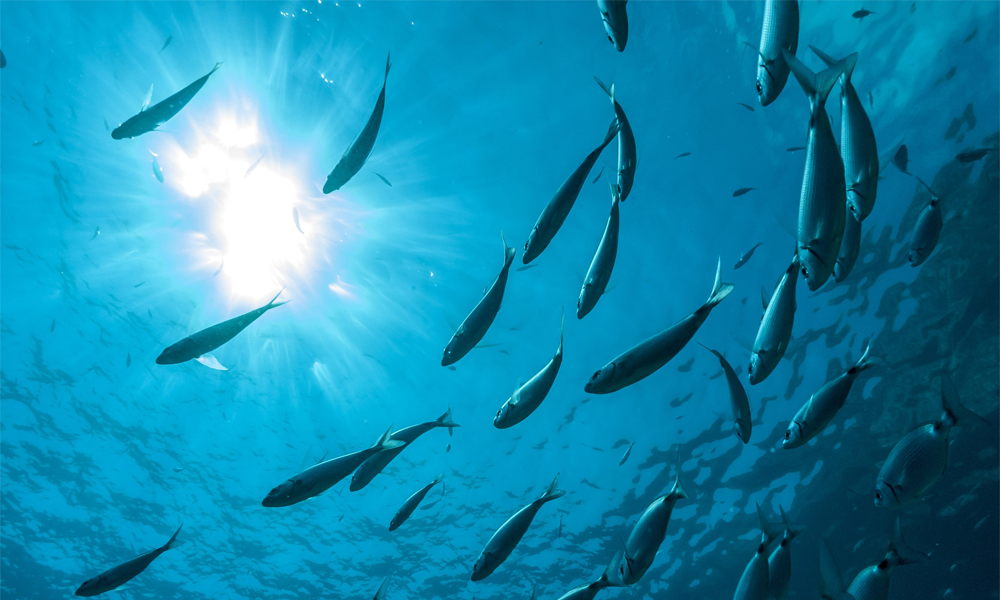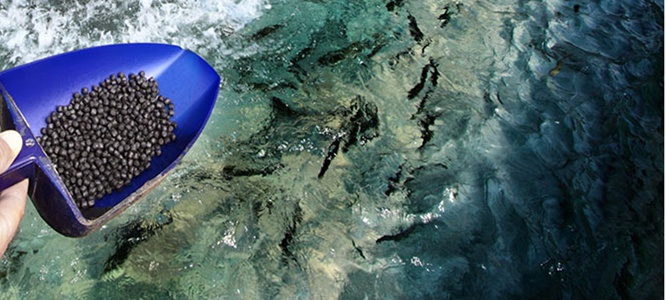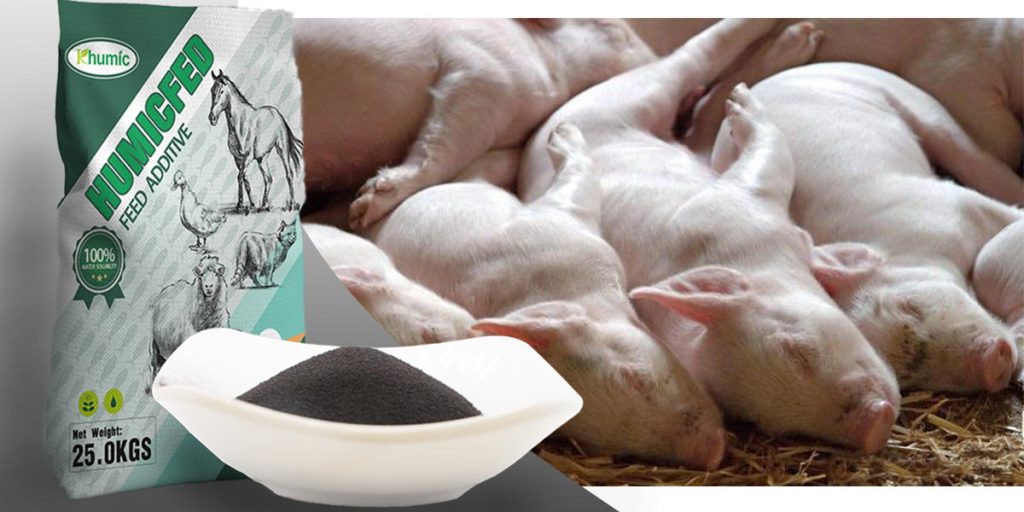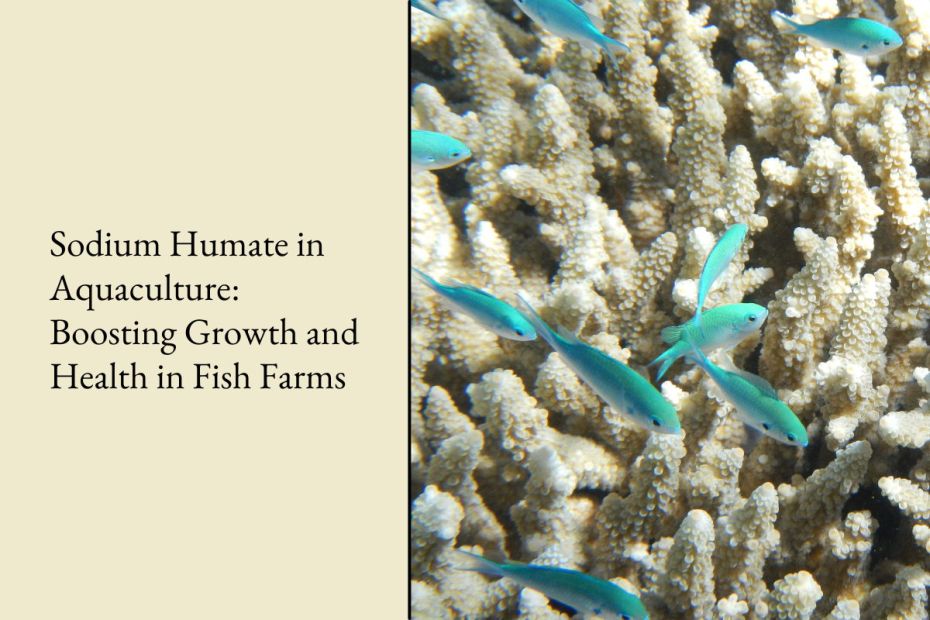What is Sodium Humate?
Sodium humate is the sodium salt of humic acid, a water-soluble humus that is easily absorbed by aquatic organisms. It can be extracted from lignite and peat. Many studies have shown that sodium humate solution can degrade comprehensive toxins in water and effectively adsorb and decompose harmful substances such as ammonia, nitrogen, hydrogen sulfide, and nitrite. It can also form hydrogels with starch or clay to adsorb copper and various dyes in aqueous solutions. Therefore, it has a wide range of applications in bio-agriculture and pollution control. It is an important water purifier in aquaculture with low cost and good effect.
Table of Contents
Benefits of Sodium Humate in Aquaculture
The main functions of sodium humate in aquaculture are adsorption, antibacterial, anti-inflammatory, antiviral, etc. It can also physically shade, and grow grass, chelate heavy metal ions, improve substrates, detoxify, and deodorize.
Water quality management
Using sodium humate’s adsorption and complexation properties, combined with suspended particles and organic matter, sodium humate can treat turbid, flooding, dead algae, oil film, foam, and other water qualities and improve light penetration. Creates a healthier aquatic environment for the growth of fish and shrimp.
Promotes Growth and Feed Conversion
Adding sodium humate to aquatic feed can increase the growth rate and feed conversion efficiency of fish and shrimp. The humic substances in sodium humate stimulate the digestive system, promote better digestion and absorption, enhance nutrient absorption, and promote overall metabolic function in aquatic species. Helping fish reach their full growth potential in a shorter time by providing essential nutrients.
Immune System Support
An important advantage of sodium humate is that it can enhance the immune system of aquatic species. By enhancing the natural defenses of fish, regulating immune responses, and reducing oxidative stress. Sodium humate can help them resist common diseases and pathogens in aquaculture environments. = Reduce mortality and make fish populations healthier.
Detoxification and Heavy Metal Remediation
In environments where heavy metal pollution is a concern, sodium humate can act as a detoxifier. Through the process of chelation and complexation, sodium humate binds to heavy metals, reducing their bioavailability and toxicity to aquatic organisms. This is particularly beneficial for mitigating the effects of industrial pollution in aquaculture systems.

Application of Sodium Humate in Aquaculture
Aquatic feed additives
One of the most common applications of sodium humate in aquaculture is as an additive to aquatic feed formulations. By adding sodium humate to feed pellets, aquaculturists can pass its benefits directly to fish or shrimp, ensuring optimal absorption and utilization.
Pond water treatment
Sodium humate can also be used for pond water treatment in aquaculture systems. By adding sodium humate to pond water, aquaculturists can improve water clarity, reduce odors, and support the overall health of aquatic ecosystems. This is particularly beneficial for intensive aquaculture operations where water quality management is critical.

Sodium Humate Feed Additive
HumicFed Sodium humate is an important natural organic supplement with significant toxin absorption properties. It is an important natural feed additive for poultry and fish. It can resist viruses and detoxify, relieve the two most common enteritis symptoms of toxic enteritis and physical enteritis, and reduce the mortality of poultry, fish, and shrimp. It has obvious medical effects on the blood circulation system and endocrine function, making the animal fur shiny.

FAQs
-
Is sodium humate safe for fish and shrimp in aquaculture?
It is generally considered safe for fish and shrimp when used at appropriate doses. However, it is important to follow recommended guidelines and monitor water quality parameters when using sodium humate in aquaculture systems.
-
How to determine the correct dosage of sodium humate in aquaculture?
The optimal dosage of sodium humate may vary depending on factors such as water volume, aquatic organism species, and specific production goals. Consulting with an aquaculture expert or conducting trials in a controlled environment can help determine the correct dosage for your operation.
-
Can sodium humate replace traditional water treatment methods in aquaculture?
While sodium humate has benefits in water quality management, it does not replace basic water treatment methods such as aeration, filtration, and disease management. Sodium humate should be used as a supplemental tool to enhance overall aquaculture practices.
-
What are the regulatory considerations for the use of sodium humate in aquaculture?
Regulatory requirements for the use of sodium humate in aquaculture may vary from region to region. It is recommended to consult with local government or regulatory agencies to ensure compliance with any regulations or restrictions regarding the use of sodium humate in aquaculture.
-
What additives can be used instead of sodium humate to improve aquaculture water quality?
In addition to sodium humate, aquaculturists can explore other additives such as zeolites, probiotics, and enzymes to improve water quality in aquaculture systems. Each additive has unique properties and uses, so it is important to evaluate its efficacy based on specific aquaculture needs.
